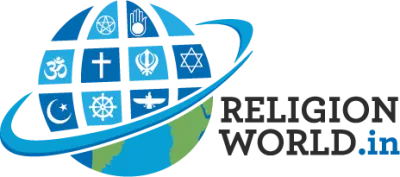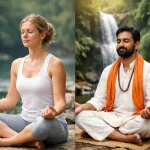“Exploring the Dynamic World of Interfaith Cooperation” – “Exploring the Dynamic World of Interfaith Cooperation
Vasu Bandhu is a young buddhist monk with many interfaith associations. The world of interfaith has many young admirers. They walk early and roam freely. He is the Interfaith Manager for Arizona Faith Network, at the International Youth Committee of Religions for Peace and part of the North American Leadership Council of United Religion Initiatives.

The Parliament of World Religions 2023 has concluded in Chicago. It touches on many relevant issues. It engages 7000 people from 95 countries and represents 210 traditions. The world of interfaith seems big and moving with a vision.

In the dynamic landscape of interfaith cooperation, visionary organizations have recognized the potential of the interfaith arena to foster global solutions. These trailblazing entities, including Religions for Peace, United Religions Initiative, KAICIID, Interfaith Alliance, and PaRD, have strategically expanded their outreach to encompass a diverse array of perspectives. Rooted in ancient ideals of unity and concord, some of these organizations have evolved over time to assume structured forms, becoming the contemporary custodians of faith actors. In the contemporary tapestry of our world, these organizations have assumed the role of faith actions, inviting faith leaders from various religions. These entities, with histories as venerable as the very motivations underpinning unity and harmony, exemplify the power of collective effort. Veteran interfaith voice Azza Karam who served as the Secretary General of Religions for Peace sees it competitive, “Instead of more collaboration and innovative means of cutting costs and enhancing outreach. Interfaith organizations are increasingly competing for resources and attention from similar sources, replicating and duplicating efforts and aspiring to be “the solution” to diverse ills”.

From peace and conflict to environmental challenges, the interfaith ecosystem has engaged itself vociferously. They always believe that faith is a motivator and that holy scriptures have a solution. Making relevant and adoptable solutions while inspiring followers to act on that, is the key. Historically faith leaders have a social role in the community and they are seen as custodians and lightkeepers of good and apt. As communities face various external challenges, faith leaders come forward to support them. The idea to engage interreligious factors comes later. It mostly depends on the diversity of the community.
When in 1893, the first Parliament of World Religions (PoWR) convened in conjunction with a world’s fair, there was also an interest in global justice and international peace, but the main focus was on all religions against irreligion. In the modern parliaments of the religions, the critical issues of the world have become central to the parliament’s objectives. Today after 130 years, when PoWR happened in Chicago again, everyone is discussing religions to work together for religious freedom and to make a more peaceful and just world. In the expo of PoWR, social organisations are showcasing their work with engaging interfaith leaders. This all leads to relevant interference of faiths in the domain of human-induced problems. Carlos Parra, who follows USA activity of the Parliament of World Religions said, “The Parliament of Religions in the USA is characterized by an almost boundless inclusivity. In 1893, the majority religions welcomed some minority religions but excluded others, such as the Native Americans. In 1993, the majority religions followed the lead of the minority religions to make the centennial Parliament a reality. In 2023, every religious viewpoint is welcome as long as it is articulated with respect for the diversity of religious opinions and practices to be found in the event. The Parliament of Religions has truly become an encounter of diversities”
Religions for Peace was founded in 1970. With a mission statement of, “Religions for Peace is committed to leading effective multi-religious responses to the world’s pressing issues. We believe ambitious goals and complex problems can best be tackled when different faith communities work together. United Religions Initiative was founded in 2000 with a mission statement of, “ The purpose of the United Religions Initiative is to promote enduring, daily interfaith cooperation, to end religiously motivated violence, and to create cultures of peace, justice, and healing for the Earth and all living beings”. KAICIID founded in 2007 and states, “KAICIID is a unique intergovernmental organization: through our dual governance structure, a Council of Parties made of States, and a Board of Directors made up of religious leaders, we bring together followers of different religious traditions, religious leaders and policymakers. Our Advisory Forum, with over 60 religious leaders from the world’s major faith and cultural traditions, allows us to connect and network communities from all over the world”. They all work with faith communities, religious leaders and interfaith groups. Their purpose may differ, but the path is the same and the faith notions are alike. Apart from this, you can find a death of institutions that can boast the magnanimity of clout as they come from the UN and the World Bank. They hold some authority to establish an agenda.
The fascination of interfaith events is undying. The spirit to hug each other growing day by day as faith actors travel hectically to attend event after event. Tangible goals as output are missed sometimes due to meets and greets. But the enthusiasm is intact. The road to change is a narrative, on which everyone is moving. Vasu Bandhu summarises it, “We are promoting intergenerational collaboration, to learn and continue the legacy of all generations. Our hope is that all generations learn from each other so that interfaith collaboration is sustainable. Part of our contributions are through the innovation of the approach to Interfaith collaboration with new means of communication and the integration of linguistic diversity, offering interpretation and translation.”
The perils of the world need instant actions. Solidarity, awareness, advocacy, execution and individual responsibility is the map for change. Faith actors are happy that they are speaking together. Mass, prayers, gatherings, seminars and conferences have an agenda. But a sense of losing out also makes them hollow. The numerous speeches and meets serve no actionable purpose. As HH Dalai Lama reiterated in the 2015 Parliament of World Religions plenary speech, “So now the time has come to be fully awake and make an effort firstly we should develop ideas or concepts of visions and with that vision tirelessly constant action and efforts. Action brings results. So we have to take action”.
—————
Bhavya Srivastava
Founder, Religion World
info@religionworld.in









